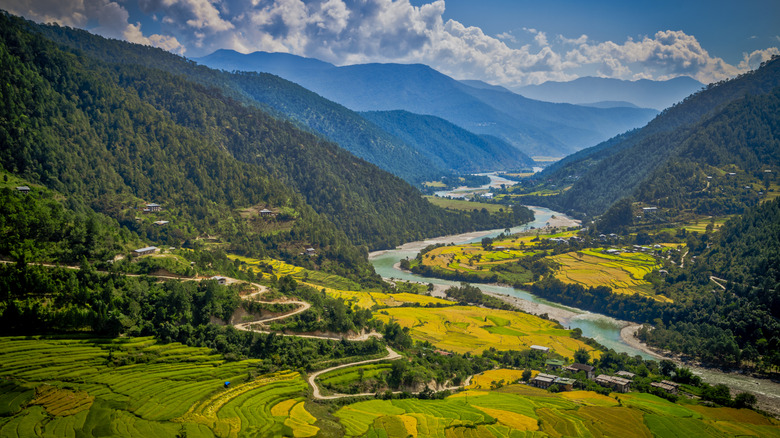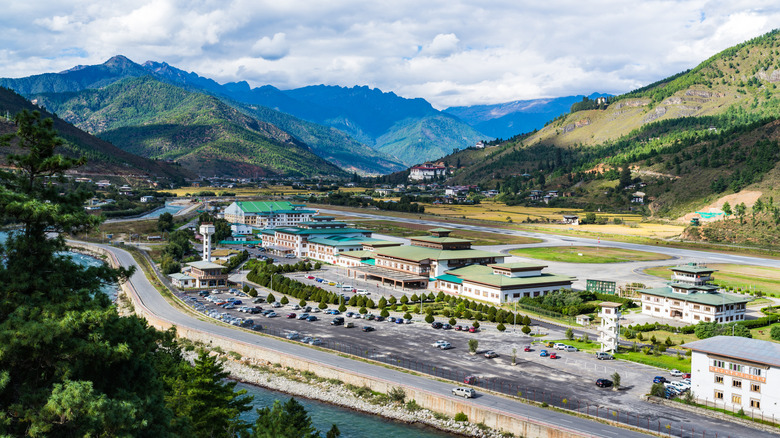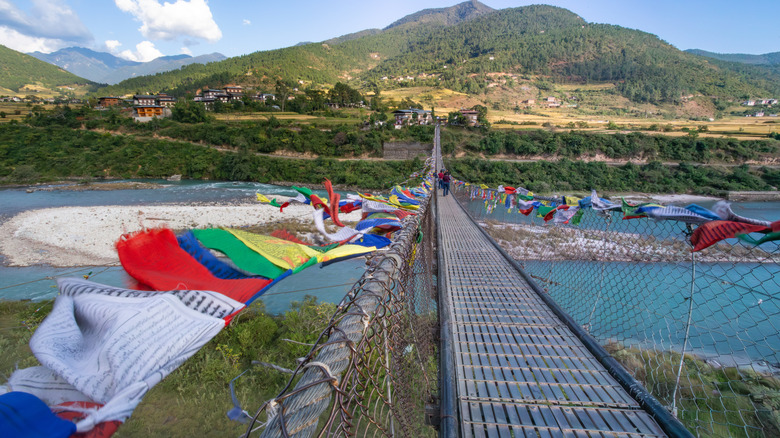One Of 'The Most Beautiful Places In The World' Is A Rarely-Visited Asian Valley Dotted With Temples
Bhutan, the world's most mountainous country, is nestled between India and China and has had a cautious approach to tourism since it opened its doors to foreigners in 1974. Over 75% of the country is covered in forest and it has a negative carbon footprint which could be threatened by unchecked tourist numbers. Because of this, the government has a "quality over quantity" attitude, with strict rules and high prices leaving the magic of this unique country for just a lucky few to experience.
In 2024, a reported 145,065 tourists visited Bhutan. Many no doubt flocked to the famous Tiger's Nest Monastery that perches on the cliffsides near Paro, or cleansed their karma at one of the capital Thimphu's many temples. Though these are essential stops on any Bhutan itinerary, people often fail to discover one of the "most beautiful places in the world" (according to Time Out) that is just a two hour drive east of the capital.
Punakha is a gorgeous valley and one of the most important in Bhutanese history. It is the site where the mighty Pho Chu and Mo Chu rivers meet and the town, which shares the same name, was once the capital of the kingdom. The grand Punakha Dzong (a fortified palatial building with a distinct national style, historically used for protection, religious ceremonies, and government functions) is a site of national pride and stands as evidence of the region's significance. You will find countless other remarkable temples and natural wonders dotted around the valley, which is a sight to behold in and of itself, making Punakha one of the most underrated destinations in Asia.
Punakha's beauty comes at a high price
The reason Punakha is rarely visited is because even getting to Bhutan can be a lengthy and expensive process. Nevertheless, as the country warms to tourists it has been getting easier to catch a glimpse of the "Land of Happiness." Nearly every nationality requires a visa to enter, however the process is relatively quick and can be done online. It costs $40 and part of the process includes paying the $100 per day, per adult, Sustainable Development Fee (which is free for children under 6 or $50 if they are aged between 6 and 12). The fee goes towards improving Bhutan's infrastructure, providing free healthcare to its citizens, and maintaining its culture. You must also sign the "Pledge of Friendship," which is a commitment to "protecting, preserving and positively contributing to [the] kingdom" according to the Bhutan Travel website.
Once you have all of your documents, you can book flights into Paro International Airport, one of the most breath-taking airports to land at. There aren't many carriers that fly into Bhutan so you'll have to book connecting flights from one of Asia's major transport hubs. It's mandatory to have a guide with you in most of the country, so it's likely you'll be picked up directly from the airport and whisked to your first destination.
The country's mountainous terrain can be tricky to navigate if you're not accustomed. A lot of the most popular spots are at an elevation that can make you feel unwell. Make sure you are prepared and know the best things to do when you experience altitude sickness. These varied elevations also bring rapidly changing weather, so layered clothing and sturdy footwear is essential, especially in the monsoon season from late June to September.
Beauty and adventure rolled into one
When you arrive in Punakha you'll be greeted with one of the most spectacular valleys on earth. The blues of the rivers and greens of the hillsides are vivid and bright, the temples are gilded, and travelers talk of their friendly interactions with locals. Beyond the beauty, it is a hub of adventure merged with a spiritual sanctuary where anyone and everyone can find their bliss. With 34 registered accommodations, there's also plenty of choice when it comes to where you stay.
To connect with your spiritual side, a trip to one of the many religious sites is a must. This includes the Punakha Dzong, as well as the Khamsum Yulley Namgyal Chorten temple, which sits an hour's walk above the valley and has some of the best views once you're there. The Chimi Lhakhang temple is also worth a visit to see a different kind of spiritualism you may not be used to if you're not from the region. It is adorned with phallic symbols, which are believed by some to ward off evil and also represent fertility, making it a place where many pray to conceive or bring their newborns to be blessed.
For adventurous types, hiking is an essential past-time in these Himalayan surrounds, with a walk across the Punakha Suspension Bridge offering a thrilling perspective over the raging Pho Chu river. White water rafting is also becoming increasingly popular, with the two rivers offering a combined 13.6 mile stretch of rapids to enjoy. They range from easy waves to longer, more difficult stretches, so you should ensure your guide is a white water expert before taking them on.


